Opinion
The Great Reset doesn’t care if you believe it exists and Canada is on the front line
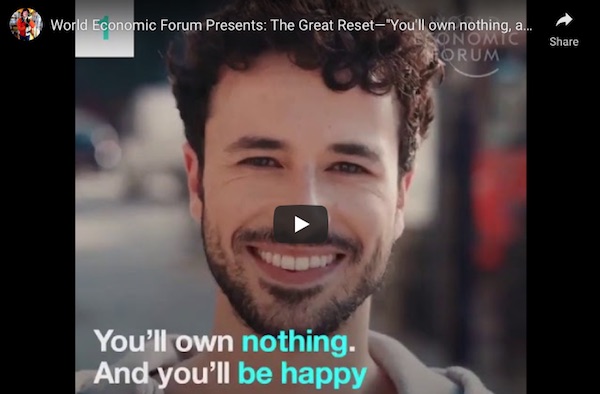
If you’re among the many people (can is possibly be the majority?) who still believe The Great Reset is an unfounded conspiracy theory, this article is for you.
The Great Reset ‘conspiracy theory’ has been around for years. If you don’t know what it is, here’s a brief explanation. It basically submits that some of the world’s wealthiest and most powerful people are using some of the world’s largest companies (which they own) as well as many of the world’s richest nations (which they run) to execute a plan to completely change the way our society works (which they don’t like very much). The theory is, these people who refer to themselves as “the elite” are planning to cripple the power of nation states and concentrate that power in a world governing body (like the World Economic Forum). This new powerful “elite” would exercise control over everyone, everywhere. They will completely change our supply chains, our economic systems and our energy systems in an effort to unite the world to protect the environment. There’s more to it, but that gets in most of the main points.
So this is the “theory”. But is there a “conspiracy” around this?
According the the Merriam-Webster Dictionary ‘conspiracy’ means simply “The act of conspiring together”. The Oxford dictionary spices that up a little. According to Oxford, ‘conspiracy’ means “A secret plan by a group of people to do something harmful or illegal”. Seems like it’s going to be easier to prove the Merriam-Webster version, but by the end of this article you’ll see how the Oxford definition might just work as well.
When it comes to all of the people who are not actively conspiring to change the world, there are roughly four categories of understanding The Great Reset. Either you:
- Have no idea there is a Great Reset
- Accept there is a Great Reset, but doubt the ability and the organization of the people conspiring.
- Accept there is a Great Reset, accept the ability of the conspirators, but either agree with their intentions, or at least not oppose their intentions due to your concern for a more fair economic system and an impending world devastating environmental disaster.
- Accept there is a Great Reset, and oppose the intentions of the conspirators because you personally value individual freedoms above everything else.
Group 1 is huge. Recent US polling shows half of Americans aren’t even aware of the Great Reset. It’s not like the people behind the reset aren’t writing and talking about it. It’s just that at least half of Americans haven’t seen them do it. That means we need to establish how it is possible in this age of information, that information of this magnitude is not being distributed to everyone. This part of my explanation is critical to understanding how very intelligent people can be completely unaware of information other people take for-granted.
It all comes down to this. We’ve all experienced the vast chasm of division and hatred in society of late. In this atmosphere of doubt and suspicion, there is really only one one thing in the entire world that absolutely everyone can believe in. President Donald Trump is a capital A a-hole. Even the “Don” would likely agree with that, right? But here’s the thing. When the rude TV star began his stunning run through the primaries, the world quickly divided between those who backed Trump and those who absolutely despised the orange tsunami.
How did this happen? Well a very large number of people, many of them living in ‘middle’ America had had it with the quality of the people running, to run America. When a second Clinton announced a Presidential bid they collectively shouted NOOOO. Then they set out in search of the exact opposite of the establishment. They found it in an orange sun rise of vitriol, emerging over the high rises of Manhattan. When Donald Trump threw his hair, ehem.. his hat into the ring, they had their guy. It wasn’t because of his experience, or that they believed he was ultimately qualified for the job. Trump’s crowning quality was the exact thing most people hate about him. You see it was that massive, bulbous, all encompassing ego that was the key. Only someone with an ego this out of control would be capable of resisting and even going on the attack against the oncoming onslaught of opposition from the embedded establishment and the mainstream media who despise him with a passion.
Trump will likely claim differently, but he didn’t invent divisiveness. The world was already moving in this direction. But like every huge event in history, it all starts with one bullet, one border crossing, and sometimes one very unusual Orange head of hair. Camps divided around Trump’s blinding ego. Guess which side the establishment was on? Guess which side the media was on? Guess what this would mean to the distribution of information?
Personally, when the orange glow emerged from Manhattan I tuned out. Not understanding what was happening, I dismissed the orange storm as a weather system that would fizzle out when people got sick of it. I tuned out of mainstream media because I only had so much time for the gong show that was (and remains) the media coverage of the orange blowhard. This is what saved me. I had to go looking elsewhere for information. I would soon find there was more information here, and different takes on the information everyone ‘knows’.
If you still depend on mainstream media you may not know or have time for an entire new world of information that has developed on the internet over the last few years. Comedians who used to turn to late night TV to analyze the daily news through humour (I understand they are still there), have turned to long form and as it turns out, extremely informing conversations in a series of compelling podcasts. They are joined by former media types and some pretty sharp up and coming minds. While their late night and daytime TV competition unite in their humorous hatred of all things Donald, these longer form conversations have tended to go deeper, due simply to the length of the presentation. Conversations often run past two and three hours, and “sound bites” are more like 5 to 15 or even 30 minute explanations of single issues. Yes it is wise to avoid a number of them, just like you would avoid a number of TV programs, but you dismiss many others at your own expense.
You don’t need to agree with them to find them compelling. They are talking about events, people, and issues (including The Great Reset) you will not even find on regular mainstream media. It is not uncommon for these podcaster / interviewers to be covering topics that my friends who rely on mainstream media won’t hear about for months, or even years. A great example of this is the Hunter Biden laptop. If you’ve been paying attention to this new online media, you’d have known about this since the fall of 2020. For those who rely on regular media, they only discovered the exact same information when it was finally confirmed by the New York Times in March of 2022. The fact they call this breaking news is hilarious (and disturbing) for those who read the original articles from the New York Post, about 20 months ago! Here’s a link to a retrospective look at Biden laptop news from The NY Post from December 2020!
Now on to The Great Reset. If you haven’t already clicked on the link in the fist sentence of this article here’s another opportunity.
OK now at least you know The Great Reset is a real thing. So we move on to people who find themselves in group 2 which doubts that the Reset will ever amount to any actual resetting. This group would say these ‘elites’ live really far away, and they’re probably harmless to us because it’s not like they have any control over us. Not in our country. Well. That all depends on how far away you live from people like Canada’s Deputy Prime Minister Chrystia Freeland. Canada’s Deputy PM is also on the Board of Trustees of the WEF. If that’s not a conflict of interest, they probably need to redefine conflict of interest. Don’t take it from me. Take it from the founder of the World Economic Forum Klaus Schwab. (You mean the Klaus Schwab who researched, wrote, and published the book COVID-19: The Great Reset, less than 6 months after Covid-19 was a thing?.. Yes. that’s the guy.) In this short video from way back in 2017 Schwab brags about the success of a WEF program called Young Global Leaders. In Schwab’s own words, the WEF has “penetrated” Canada’s federal cabinet. Sounds kind of conspiratorial.. and a little bit less like a theory when he says it.
If we want to know if this should be disturbing to us we need to know what Earth’s elites are planning for us. Well the WEF was kind enough to tell us exactly what The Great Reset will mean to.. well.. the rest of us. This (in)famous video reveals just how different life will be for the average person by 2030. It doesn’t say how “the elite” will live, though we can expect they’ll have slightly different rules. Alas, I’m getting ahead of myself. Here’s a list of the 8 things the WEF has been kind enough to let us know we need to prepare for by 2030. I understand this video originally came out in 2016. I first saw it in 2020. In five years it’s been circulated widely. Though it’s no longer featured on the WEF website, there are copies all over the internet.
Recap:
1) We’ll own nothing. Ouch. (Obviously the elite will own everything and since they’re smarter than us we’ll be very happy to know they’re taking care of us so well). It’s being said by opponents of this idea that people who own a bit of land are perhaps the greatest risk to this environmental movement. It’s bad for the environment for us to own property or even your own home. Especially because we decide what happens there. Do we keep animals? Do we cut down trees or burn around on recreation vehicles or inefficient farm machinery? All bad for the environment. All that will change.
2) The US will no longer be the world’s superpower. (Hmmm… Don’t these things often change after brutal wars?) Regardless instead of one superpower, there will be a few important nations. Wonder if that will make the world more secure, or less secure?
3) They plan to use 3D printers to make human organs (lucky for us).
4) We will not be allowed to eat meat very much anymore (cows and pigs and sheep are bad for the environment). Hey, speaking of conspiracies, I mean series of seemingly related facts that are probably just random.. Did you know Bill Gates is the largest private owner of ‘farmland’ in the United States? Not sure when the software magnate and WEF “Agenda Contributor” took up farming. I’m sure none of this is related to what Mr. Gates is going to allow us to eat in the future (nervous smile). Although Gates also happens to be a big investor in synthetic meat. Did I mention he’s an ‘agenda contributor’ with the WEF?
5) One billion people in the world will have to move due to climate change (Not sure if that applies to the beach homes of the elite). (Also not sure why scientists and engineers will stop doing what they’ve always done and help us cope and adapt if conditions are changing quickly and significantly.)
6) Polluters will have to pay to emit carbon dioxide. We already know how this feels in Canada.
7) We will be prepared to travel in space (I’m ready to go now). The logic here is that the earth will be so ruined by us, that we better be prepared to go destroy an entirely different planet. What could go wrong?
Finally and maybe most disturbing of all..
8) Western Values will have been tested to the breaking point. Some probably like the sound of that. But in the history books I’ve read, when a society’s values are tested “to the breaking point” that tends to look incredibly violent and warlike. (In my opinion number 8 is going to be really challenging to accomplish at the same time as the everybody will be happy part in number 1. Maybe that’s why they put them so far apart in their list.). By the way, you have to wonder what they mean by “western values”? Is this finally being enlightened enough to turf Christianity and those silly laws that western societies adopted from those traditional religious beliefs. Can’t wait to find out what the new traditions will be! This outta go over well (Imagine Jerry Seinfeld saying that.)
OK. If you don’t find this a tad disturbing that might mean you are personally in favour of The Great Reset. It’s still a free country so that’s just fine with the rest of us. However the introduction video above is very much prior to the official launch of The Great Reset. That took place in the opening months of the Covid-19 pandemic. It would be better to judge how this is actually going to work by looking at how this New World Order (that’s what they’re calling it now) is unfolding. Now that the resetters have been resetting for about two years, how’s it going so far? Here’s a report from Glenn Beck. Glenn is a conservative pundit and broadcaster. If you follow the mainstream media you will know him as a radical far right conservative (and maybe a lunatic). If you don’t see Beck through that filter you will acknowledge that he sometimes says very interesting things. Things like this. By the way, pay attention to the background behind the speakers at this “world government” conference. Then ask yourself if this group might be planning a new world order.
It’s puzzling that the Canadian media doesn’t give this any coverage. I guess there are simply more important things to talk about than whether our own federal cabinet is working in our interest or in the interests of really rich people who plan to OWN EVERYTHING in just a few short years. Oh this is probably nothing but you may have heard about the federal NDP party making a deal to secure the federal government right up to 2025. That party is lead by the guy who now is Co-Prime Minister Jagmeet Singh. Guess what?
Speaking of Canada. You may find this conversation between the British podcast sensation Russel Brand and Nick Corbishley interesting. Nick is the author of Scanned: Why Vaccine Passports and Digital IDs Will Mean the End of Privacy and Personal Freedom. As Canadians it is interesting to hear how people in other countries are seeing The Great Reset, and how Canadians are “world leaders”. Yippee?
If you’ve managed to find your way through the longest article ever, you will certainly now be able to acknowledge The Great Reset or New World Order exists. The question now is, do you believe this is a good thing or do you think we should resist it as things were working pretty well before they launched this? We can get into that later. At the very least the massive number of people who dismissed the “conspiracy theorists” as slightly insane will see there is a reason many people are concerned. In the end, as all philosophers know we need to establish the facts, before we can decide whether we agree with them or not.
Finally my wise friend Garett reminded about the joke that’s been circulating for many months now on social media. Every time it turns out another conspiracy theory was actually a conspiratorial fact, someone passes it around again. If you haven’t seen it yet it might help with your outlook in the future. Goes like this. “What is the difference between a conspiracy theory and the truth? — About 6 months!”
Business
Canada must address its birth tourism problem

By Sergio R. Karas for Inside Policy
One of the most effective solutions would be to amend the Citizenship Act, making automatic citizenship conditional upon at least one parent being a Canadian citizen or permanent resident.
Amid rising concerns about the prevalence of birth tourism, many Western democracies are taking steps to curb the practice. Canada should take note and reconsider its own policies in this area.
Birth tourism occurs when pregnant women travel to a country that grants automatic citizenship to all individuals born on its soil. There is increasing concern that birthright citizenship is being abused by actors linked to authoritarian regimes, who use the child’s citizenship as an anchor or escape route if the conditions in their country deteriorate.
Canada grants automatic citizenship by birth, subject to very few exceptions, such as when a child is born to foreign diplomats, consular officials, or international representatives. The principle known as jus soli in Latin for “right of the soil” is enshrined in Section 3(1)(a) of the Citizenship Act.
Unlike many other developed countries, Canada’s legislation does not consider the immigration or residency status of the parents for the child to be a citizen. Individuals who are in Canada illegally or have had refugee claims rejected may be taking advantage of birthright citizenship to delay their deportation. For example, consider the Supreme Court of Canada’s ruling in Baker v. Canada. The court held that the deportation decision for a Jamaican woman – who did not have legal status in Canada but had Canadian-born children – must consider the best interests of the Canadian-born children.
There is mounting evidence of organized birth tourism among individuals from the People’s Republic of China, particularly in British Columbia. According to a January 29 news report in Business in Vancouver, an estimated 22–23 per cent of births at Richmond Hospital in 2019–20 were to non-resident mothers, and the majority were Chinese nationals. The expectant mothers often utilize “baby houses” and maternity packages, which provide private residences and a comprehensive bundle of services to facilitate the mother’s experience, so that their Canadian-born child can benefit from free education and social and health services, and even sponsor their parents for immigration to Canada in the future. The financial and logistical infrastructure supporting this practice has grown, with reports of dozens of birth houses in British Columbia catering to a Chinese clientele.
Unconditional birthright citizenship has attracted expectant mothers from countries including Nigeria and India. Many arrive on tourist visas to give birth in Canada. The number of babies born in Canada to non-resident mothers – a metric often used to measure birth tourism – dropped sharply during the COVID-19 pandemic but has quickly rebounded since. A December 2023 report in Policy Options found that non-resident births constituted about 1.6 per cent of all 2019 births in Canada. That number fell to 0.7 per cent in 2020–2021 due to travel restrictions, but by 2022 it rebounded to one per cent of total births. That year, there were 3,575 births to non-residents – 53 per cent more than during the pandemic. Experts believe that about half of these were from women who travelled to Canada specifically for the purpose of giving birth. According to the report, about 50 per cent of non-resident births are estimated to be the result of birth tourism. The upward trend continued into 2023–24, with 5,219 non-resident births across Canada.
Some hospitals have seen more of these cases than others. For example, B.C.’s Richmond Hospital had 24 per cent of its births from non-residents in 2019–20, but that dropped to just 4 per cent by 2022. In contrast, Toronto’s Humber River Hospital and Montreal’s St. Mary’s Hospital had the highest rates in 2022–23, with 10.5 per cent and 9.4 per cent of births from non-residents, respectively.
Several developed countries have moved away from unconditional birthright citizenship in recent years, implementing more restrictive measures to prevent exploitation of their immigration systems. In the United Kingdom, the British Nationality Act abolished jus soli in its unconditional form. Now, a child born in the UK is granted citizenship only if at least one parent is a British citizen or has settled status. This change was introduced to prevent misuse of the immigration and nationality framework. Similarly, Germany follows a conditional form of jus soli. According to its Nationality Act, a child born in Germany acquires citizenship only if at least one parent has legally resided in the country for a minimum of eight years and holds a permanent residence permit. Australia also eliminated automatic birthright citizenship. Under the Australian Citizenship Act, a child born on Australian soil is granted citizenship only if at least one parent is an Australian citizen or permanent resident. Alternatively, if the child lives in Australia continuously for ten years, they may become eligible for citizenship through residency. These policies illustrate a global trend toward limiting automatic citizenship by birth to discourage birth tourism.
In the United States, Section 1 of the Citizenship Clause of the Fourteenth Amendment to the Constitution prescribes that “All persons born or naturalized in the United States, and subject to the jurisdiction thereof, are citizens of the United States and of the State wherein they reside.” The Trump administration has launched a policy and legal challenge to the longstanding interpretation that every person born in the US is automatically a citizen. It argues that the current interpretation incentivizes illegal immigration and results in widespread abuse of the system.
On January 20, 2025, President Donald Trump issued Executive Order 14156: Protecting the Meaning and Value of American Citizenship, aimed at ending birthright citizenship for children of undocumented migrants and those with lawful but temporary status in the United States. The executive order stated that the Fourteenth Amendment’s Citizenship Clause “rightly repudiated” the Supreme Court’s “shameful decision” in the Dred Scott v. Sandford case, which dealt with the denial of citizenship to black former slaves. The administration argues that the Fourteenth Amendment “has never been interpreted to extend citizenship universally to anyone born within the United States.” The executive order claims that the Fourteenth Amendment has “always excluded from birthright citizenship persons who were born in the United States but not subject to the jurisdiction thereof.” The order outlines two categories of individuals that it claims are not subject to United States jurisdiction and thus not automatically entitled to citizenship: a child of an undocumented mother and father who are not citizens or lawful permanent residents; and a child of a mother who is a temporary visitor and of a father who is not a citizen or lawful permanent resident. The executive order attempts to make ancestry a criterion for automatic citizenship. It requires children born on US soil to have at least one parent who has US citizenship or lawful permanent residency.
On June 27, 2025, the US Supreme Court in Trump v. CASA, Inc. held that lower federal courts exceed their constitutional authority when issuing broad, nationwide injunctions to prevent the Trump administration from enforcing the executive order. Such relief should be limited to the specific plaintiffs involved in the case. The Court did not address whether the order is constitutional, and that will be decided in the future. However, this decision removes a major legal obstacle, allowing the administration to enforce the policy in areas not covered by narrower injunctions. Since the order could affect over 150,000 newborns each year, future decisions on the merits of the order are still an especially important legal and social issue.
In addition to the executive order, the Ban Birth Tourism Act – introduced in the United States Congress in May 2025 – aims to prevent women from entering the country on visitor visas solely to give birth, citing an annual 33,000 births to tourist mothers. Simultaneously, the State Department instructed US consulates abroad to deny visas to applicants suspected of “birth tourism,” reinforcing a sharp policy pivot.
In light of these developments, Canada should be wary. It may see an increase in birth tourism as expectant mothers look for alternative destinations where their children can acquire citizenship by birth.
Canadian immigration law does not prevent women from entering the country on a visitor visa to give birth. The Immigration and Refugee Protection Act (IRPA) and the associated regulations do not include any provisions that allow immigration officials or Canada Border Services officers to deny visas or entry based on pregnancy. Section 22 of the IRPA, which deals with temporary residents, could be amended. However, making changes to regulations or policy would be difficult and could lead to inconsistent decisions and a flurry of litigation. For example, adding questions about pregnancy to visa application forms or allowing officers to request pregnancy tests in certain high-risk cases could result in legal challenges on the grounds of privacy and discrimination.
In a 2019 Angus Reid Institute survey, 64 per cent of Canadians said they would support changing the law to stop granting citizenship to babies born in Canada to parents who are only on tourist visas. One of the most effective solutions would be to amend Section 3(1)(a) of the Citizenship Act, making it mandatory that at least one parent be a Canadian citizen or permanent resident for a child born in Canada to automatically receive citizenship. Such a model would align with citizenship legislation in countries like the UK, Germany, and Australia, where jus soli is conditional on parental status. Making this change would close the current loophole that allows birth tourism, without placing additional pressure on visa officers or requiring new restrictions on tourist visas. It would retain Canada’s inclusive citizenship framework while aligning with practices in other democratic nations.
Canada currently lacks a proper and consistent system for collecting data on non-resident births. This gap poses challenges in understanding the scale and impact of birth tourism. Since health care is under provincial jurisdiction, the responsibility for tracking and managing such data falls primarily on the provinces. However, there is no national framework or requirement for provinces or hospitals to report the number of births by non-residents, leading to fragmented and incomplete information across the country. One notable example is BC’s Richmond Hospital, which has become a well-known birth tourism destination. In the 2017–18 fiscal year alone, 22 per cent of all births at Richmond Hospital were to non-resident mothers. These births generated approximately $6.2 million in maternity fees, out of which $1.1 million remained unpaid. This example highlights not only the prevalence of the practice but also the financial burden it places on the provincial health care programs. To better address the issue, provinces should implement more robust data collection practices. Information should include the mother’s residency or visa status, the total cost of care provided, payment outcomes (including outstanding balances), and any necessary medical follow-ups.
Reliable and transparent data is essential for policymakers to accurately assess the scope of birth tourism and develop effective responses. Provinces should strengthen data collection practices and consider introducing policies that require security deposits or proof of adequate medical insurance coverage for expectant mothers who are not covered by provincial healthcare plans.
Canada does not currently record the immigration or residency status of parents on birth certificates, making it difficult to determine how many children are born to non-resident or temporary resident parents. Including this information at the time of birth registration would significantly improve data accuracy and support more informed policy decisions. By improving data collection, increasing transparency, and adopting preventive financial safeguards, provinces can more effectively manage the challenges posed by birth tourism, and the federal government can implement legislative reforms to deal with the problem.
Sergio R. Karas, principal of Karas Immigration Law Professional Corporation, is a certified specialist in Canadian citizenship and immigration law by the Law Society of Ontario. He is co-chair of the ABA International Law Section Immigration and Naturalization Committee, past chair of the Ontario Bar Association Citizenship and Immigration Section, past chair of the International Bar Association Immigration and Nationality Committee, and a fellow of the American Bar Foundation. He can be reached at [email protected]. The author is grateful for the contribution to this article by Jhanvi Katariya, student-at-law.
Crime
DEA Busts Canadian Narco Whose Chinese Supplier Promised to Ship 100 Kilos of Fentanyl Precursors per Month From Vancouver to Los Angeles
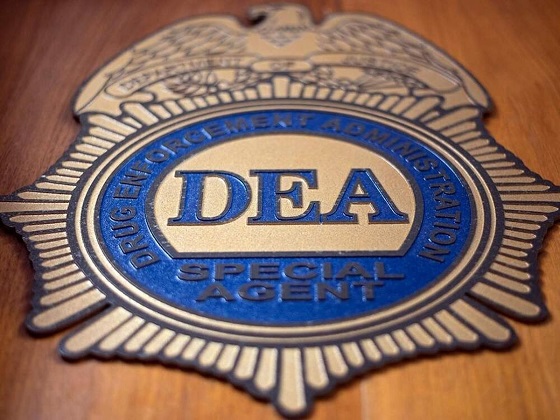
A Hollywood-style DEA sting revealed a seamless pipeline from Vancouver brokers to Los Angeles cartel operatives and Australian drug markets.
A senior Indo-Canadian gangster from an ultra-violent British Columbia–based fentanyl trafficking gang with ties to Latin cartels, Chinese Triads, and Hezbollah was taken down in a stunning U.S. government sting that saw a thick-accented Chinese narco casually promise an undercover agent at a Vancouver café that he could ship 100 kilograms of fentanyl precursors per month from Vancouver to Los Angeles, using his trucking company fronted by an Indo-Canadian associate.
The case is detailed in a sprawling DEA probe spanning Turkey, Mexico City, Dubai, Australia, Toronto, Vancouver, Montreal, Hong Kong, and Los Angeles — all captured in a 29-page affidavit with scenes so surreal they could rival a Hollywood script, complete with underworld nicknames like “Burger,” “Queen,” and “Darth Vader.”
At the center is Opinder Singh Sian, a Canadian national and longtime Lower Mainland underworld figure who survived targeted shootings and reportedly leads the Brothers Keepers gang — a key proxy for the Sinaloa cartel in Canada, interoperable with other Latin American cartels, Chinese Communist Party chemical suppliers, and working alongside the Kinahans, a notorious Irish crime family now based in Dubai and closely linked to Hezbollah finance networks.
Sian has been arrested in Arizona and indicted in a sweeping U.S. case that underscores British Columbia’s critical role as a global trafficking hub, bringing together Mexican cartels and Chinese precursor suppliers that operate with near impunity in Vancouver but are increasingly the focus of elite U.S. law enforcement.
The affidavit illustrates how Vancouver’s criminal networks have funneled Chinese precursors into the United States and directly tied them to methamphetamine deals with Mexican gangsters on Los Angeles streets — part of one of the most sophisticated narcotics smuggling conspiracies ever uncovered in North America.
The explosive details are laid out in a newly unsealed affidavit filed by U.S. federal agent Albert Polito in support of a criminal complaint and arrest warrant against Sian. Sworn in 2024, the document offers a rare inside look at how Vancouver’s street-level crews transformed into global brokers bridging continents and more sophisticated criminal syndicates.
Much of the case focuses on methamphetamine shipments from Los Angeles to Australia, orchestrated by Sian, who acted as a proxy for more senior transnational Mexican, Chinese, and Iranian networks, experts say.
“Local gangs like Brothers Keepers aren’t just street crews — they’re frontline proxies in transnational narcoterror networks,” former Canadian intelligence analyst Scott McGregor, an expert on the nexus of Chinese and Iranian threats and foreign interference, commented on X. “Ignoring them as low-level threats misses their role in laundering, logistics, and hybrid warfare.”
But the penultimate finding — likely of high interest in Washington political circles — came from a stunning investigative meeting. In August 2023, the DEA affidavit describes how a shadowy U.S. undercover source known as “Queen” or CS-1 sat across from a man in Vancouver speaking with a thick Chinese accent.
The man, later identified as Peter Peng Zhou, explained in detail how he could “receive fentanyl precursor chemicals from China into Vancouver” and “send 100 kilos of chemicals per month to Los Angeles” using his British Columbia trucking company run by an Indo-Canadian associate.
Zhou allegedly told CS-1 that he had been doing this for about ten years and remembered when these kilograms of chemicals were upwards of $300,000 each. He claimed he knew how to make fentanyl and methamphetamine from the chemicals and emphasized that he would require upfront payment before sending any shipments south to Los Angeles.
Demonstrating how casually Vancouver’s narcos blend into upscale environments, the affidavit describes how Sian first dined at a downtown restaurant with his wife, child, and CS-1 before taking “The Queen” to meet his precursor suppliers at a coffee house.
The Bureau is a reader-supported publication.
To receive new posts and support my work, consider becoming a free or paid subscriber.
That critical meeting, involving Sian, Zhou, and other associates, provided prosecutors with some of the clearest evidence yet of a direct chemical pipeline from Chinese suppliers into North American distribution networks, routed first through Vancouver’s port and trucking infrastructure.
The investigation began in June 2022 when DEA agents in Ankara, Turkey, received intelligence about an opportunity to embed a confidential source into a global trafficking organization. This network needed help moving large shipments of methamphetamine and cocaine from Southern California to Australia — one of the world’s most lucrative drug markets.
DEA agents provided their Ankara counterparts with the phone number of CS-1 — known in global gang networks as “Queen” — who posed as an international logistics coordinator. A Turkish narco, Ibrahim Ozcelik, made initial contact and then passed CS-1’s details to a North American leader: Opinder Singh Sian.
After initial communications, Sian and CS-1 arranged an in-person meeting in Vancouver on February 1, 2023. During this pivotal encounter, Sian claimed to work closely with Irish organized crime — specifically the Kinahan family — as well as Italian groups and other powerful Canadian gangs. Outside Canada, he described sourcing drugs directly from major Mexican and South American cartels, reinforcing his role as a cross-border broker capable of linking multiple criminal networks. He also said he collaborated with a known Turkish drug kingpin, Hakan Arif, highlighting the global scope of his alliances.
While in Vancouver, Sian introduced CS-1 to two male associates. They explained they had about 500 kilograms of cocaine stockpiled and needed help moving it through Los Angeles ports and on to Australia. CS-1 claimed they could facilitate offloading in Los Angeles, repackaging, and onward shipping via container vessel — a scheme designed to tap into Australia’s sky-high wholesale prices, which exceed $200,000 per kilogram.
In March 2023, Sian and CS-1 met again at a restaurant in Manhattan Beach, California, to discuss expanding into methamphetamine smuggling. “Queen” also brought along a DEA undercover agent (“UC-1”), posing as a cousin who worked at the Port of Long Beach and helped move narcotics undetected.
At the meeting, Sian expressed caution, acknowledging they could get in trouble just for meeting. He said his first shipment would be “200,” consistent with earlier encrypted text conversations. UC-1 advised doing fewer but larger shipments to reduce detection risk, emphasizing this was only done for CS-1 as “family.”
Sian pressed for details about the port, probed UC-1’s connections, and mentioned knowing other contacts at the port, the DEA alleges.
By June 2023, the plan to move large methamphetamine shipments into the U.S. began to accelerate. Sian advised that he and his associates would deliver an estimated 500 to 750 kilograms of methamphetamine in separate drops coordinated by his network. On June 13, 2023, Sian created an encrypted chat group using the alias “Cain,” adding “Sticks” (later identified as Sebastian Rollin, a Canadian based in Montreal) and CS-1.
Rollin allegedlly informed CS-1 that his crew would soon deliver 30 pounds of methamphetamine in Southern California as part of the first staged shipment.
Another trafficker known as “El R” or “The R,” later identified as Ruben Chavez Ibarra, entered the operation.
The DEA’s Los Angeles operation revealed gritty street-level deals directly tying Sian’s Indo-Canadian group to “Queen’s” Mexican networks. On July 6, 2023, after days of negotiation, Jorge Orozco-Santana arranged a pick-up in Anaheim using a white Mercedes. He verified the deal with the serial number of a dollar bill token, handed over two plastic bins containing 84.6 kilograms of methamphetamine. The DEA tied this deal to the Montreal network involved in Sian’s encrypted chats.
On July 29, 2023, Sian created a new Threema group chat including a new associate using the moniker “AAA,” later identified as Tien Vai Ty Truong — a dual citizen of Vietnam and Canada, with narco operations in Toronto and Vancouver directed from Hong Kong, according to the DEA affidavit.
The group discussed the 30-pound and 200-pound loads and planned their shipment to Australia. On August 1, Sian asked CS-1 to call an associate named Kular to manage mounting anxiety among Mexican sources over shipment delays.
Meanwhile, CS-1 began discussing fentanyl precursor chemicals with Kular and Sian.
This line of discussion began because Kular had first asked CS-1 whether her networks could receive direct ketamine shipments into Mexico City — a question that suggested to the DEA that Sian’s network likely had direct access to Chinese Communist Party–linked drug suppliers and large-scale chemical manufacturing channels.
In response, the DEA’s High Intensity Drug Trafficking Area Group 48 team prompted “Queen” to pivot and ask about fentanyl precursors. Queen did so, requesting prices on two critical compounds: 1-BOC-4-piperidone and 1-BOC-4-anilinopiperidine. Kular replied that the price would be $225 for the first chemical and $750 for the second, plus $1,000 for shipping.
Shortly after, on July 25, 2023, Sian himself directly contacted Queen, claiming he could supply those same precursors directly and even provide initial samples. He said he could get the chemicals “straight from China,” and proposed shipping them by container into the Port of Long Beach.
To build trust, Sian offered to mail a sample first. On July 29, Queen provided Sian with an undercover DEA-controlled PO box. That same day, Sian confirmed he had sent 20 grams of 1-BOC-4-piperidone and said he would accept cryptocurrency (specifically USDT, also known as Tether) for future large orders. By August 10, Sian informed Queen that the sample shipment had been sent, though it might not arrive until the following week — further confirming the group’s operational capacity to source Chinese precursors and move them into the U.S.
This was the evidence the DEA needed to take the Vancouver port fentanyl sting into high gear.
Returning to Vancouver in August, the headline-making fentanyl meeting came into full context. On August 16, 2023, CS-1 met Sian and his wife and child for lunch in downtown Vancouver. After lunch, Sian drove CS-1 to meet two individuals capable of sending bulk fentanyl precursor chemicals into the United States.
At a coffee shop, Peter Peng Zhou — speaking with a heavy Chinese accent — described how he could receive precursor shipments from China into Vancouver and move 100 kilograms per month to Los Angeles using his British Columbia trucking company.
In an almost absurdly candid aside, Zhou introduced his partner, known as “Burger,” described as a Southeast Asian male who managed “the money side” of the business for him. According to the DEA affidavit, Burger bluntly said he was involved because “his wife was very greedy and wanted him to make more money.”
The pivotal Vancouver coffee meeting also brought in more connections to Mexican operatives in California. During the same meeting, Sian mentioned a contact named Orlando, referring to Orlando Escutia, a Bakersfield, California–based associate. Sian explained that Escutia would be delivering CS-1 an additional 50 kilograms of methamphetamine the following week for shipment to Australia.
Zhou further revealed he could start acquiring a new fentanyl precursor with a CAS number ending in 228, describing it as a “newer and better” chemical for making fentanyl. He elaborated that when he shipped these chemicals by mail, he used a special bag designed to evade law enforcement detection, the DEA alleges.
Later that same day, CS-1 and Sian met with another key figure known as “ABC,” later identified as Kular, at a restaurant in downtown Vancouver. Kular claimed that his own boss, “AAA” — later identified as Tien Truong — was a Chinese national about 55 years old, mainly operating in the Toronto area. According to Kular, Truong’s bosses were ultimately based out of Hong Kong and specialized in moving large quantities of cocaine and methamphetamine around the world.
-
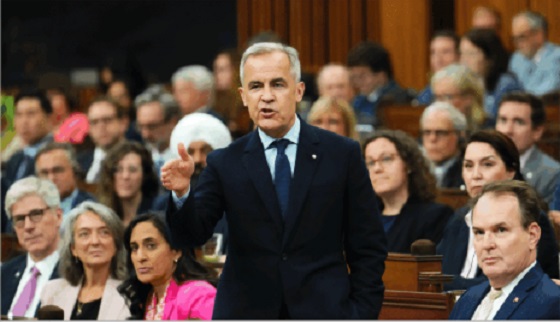
 Business23 hours ago
Business23 hours agoMark Carney’s Fiscal Fantasy Will Bankrupt Canada
-
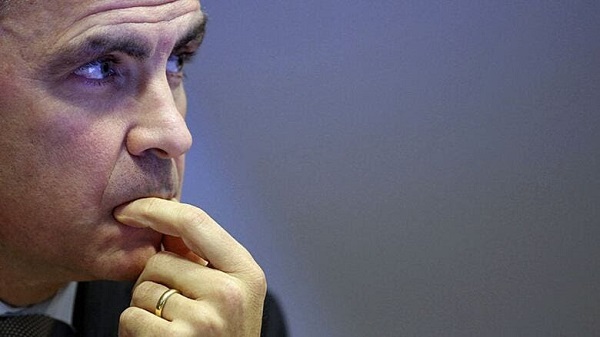
 Business2 days ago
Business2 days agoCarney government should apply lessons from 1990s in spending review
-
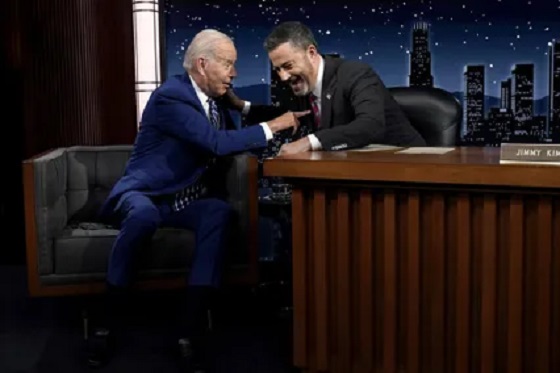
 Entertainment2 days ago
Entertainment2 days agoStudy finds 99% of late-night TV guests in 2025 have been liberal
-

 Alberta23 hours ago
Alberta23 hours agoTemporary Alberta grid limit unlikely to dampen data centre investment, analyst says
-

 Opinion1 day ago
Opinion1 day agoCharity Campaigns vs. Charity Donations
-

 Frontier Centre for Public Policy2 days ago
Frontier Centre for Public Policy2 days agoCanada’s New Border Bill Spies On You, Not The Bad Guys
-
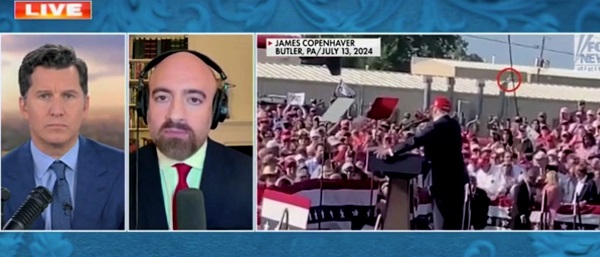
 Daily Caller19 hours ago
Daily Caller19 hours ago‘Strange Confluence Of Variables’: Mike Benz Wants Transparency Task Force To Investigate What Happened in Butler, PA
-

 Uncategorized1 day ago
Uncategorized1 day agoCNN’s Shock Climate Polling Data Reinforces Trump’s Energy Agenda






